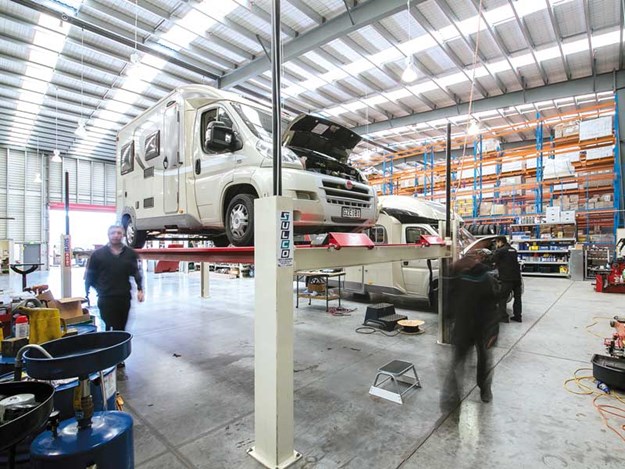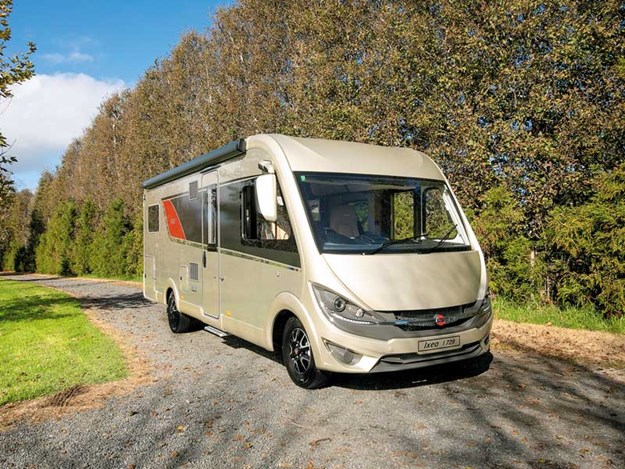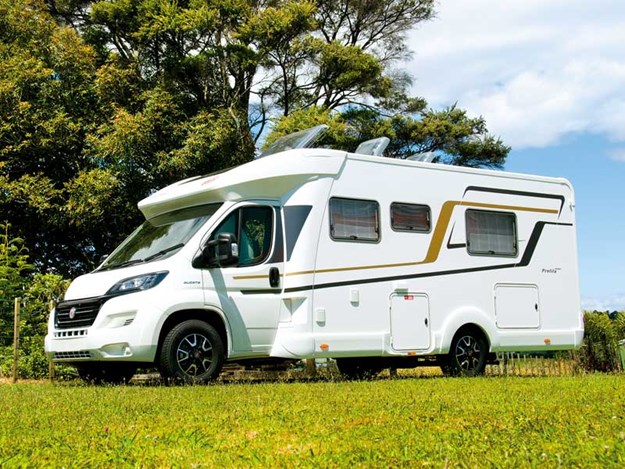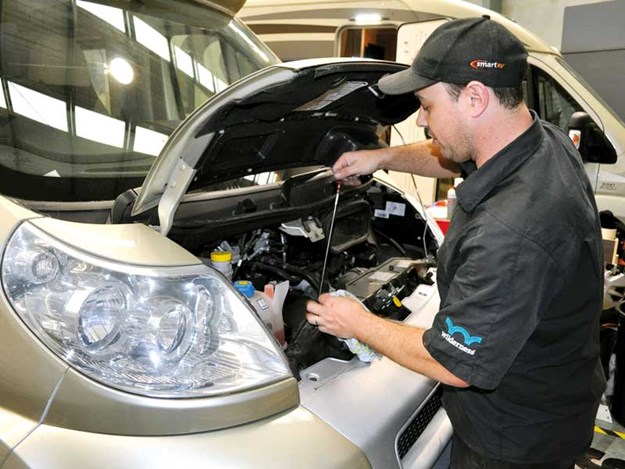It rattles off the tongue quite easily but there’s more to it than you’d credit at first glance. Motorhome weights set the parameters for two other important items: driver’s licences and vehicle fitness warrants. There are two vehicle weights that loom large for the majority of motorhome owners: 3500kg and 6000kg.
 |
Your vehicle’s WOF or COF inspection is a regular check to ensure it meets the minimum safety stansdards |
The first weight is the demarcation between a vehicle needing a Warrant of Fitness (WOF) or a Certificate of Fitness (COF).
- 3500kg and under is a ‘light vehicle’ requiring WOF
- 3501kg and over is a ‘heavy vehicle’ requiring a COF
The second weight, 6000kg, is the maximum a vehicle can weigh and still be driven by a Class 1 (car) licence holder. For vehicles from 6001kg up to 18,000kg, a Class 2 licence or higher is required.
The 6000kg threshold also applies when the driven vehicle is towing another vehicle, such as a motorhome towing a boat. This weight—the Gross Combined Weight (GCW)—is calculated by adding the weight of the towed vehicle to the GVM of the towing vehicle.
 |
With a GVW of 3850kg, the Bürstner Ixeo I 729 requires a COF and can be driven on a Class 1 car licence |
If the GCW is 6000kg or less, then a Class 1 licence is sufficient; if it is more, a Class 2 licence or higher is required.
If you have a Class 1Learners (1L) or 1Restricted (1R) licence, you can drive a motorhome with a GVW of 6000kg or less but it must not weigh more than 4500kg on the road while you are driving it.
Set by the manufacturer
 |
Weighing in at 3500kg, the Eura Mobil Pro T 725 QB gets by on a WOF and can be driven on a Class 1 car licence |
The vehicle’s Gross Vehicle Mass (GVM) sometimes referred to as the Gross Vehicle Weight (GVW) is set by the manufacturer on the basis that that is the heaviest safe operating weight for that particular configuration of the vehicle.
If a vehicle is operated on the road weighing more than the GVW, the driver can be prosecuted, and in the event of an accident, the vehicle insurer may decline any claim made against the vehicles insurance policy.
Tare weight
In New Zealand, the tare weight is the weight of the vehicle with its fuel tank full, but otherwise, the vehicle is empty. Anything else put into the vehicle is payload. The payload weight is the difference between the tare weight and GVW.
For example, a 7.2-metre-long four-berth motorhome with an empty 100-litre water tank on a popular European chassis with a tare weight of 3000kg and a GVW of 3500kg has a payload of 500kg.
If four passengers at 80kgs each—the standard allowance made per passenger, a total of 320kg – are put aboard, and the water tank is filled (100 litres being100kg), there is just 80kg left for clothes, food, and beverages before the vehicle goes overweight.
Peripheral issues
 |
A WOF can be done by any workshop that employs a qualified warrant inspector |
Motorhomes on the open road weighing more than 3501kg have to observe heavy vehicle speed limits. Motorhomes on a WOF (under 3501kg) are light vehicles and able to travel at the highway maximum legal speed limit but those on a COF (more than 3500kg) are ‘heavy vehicles’ and restricted to 90kph.
Motorhomes, being light vehicles, are caught up in legislation surrounding Electronic Stability Control (ESC). It has been mandatory for ESC to be fitted to newly registered light vehicles since 1 July 2015. From 1 March 2020, it will be compulsory for all light vehicles, including motorhomes imported second-hand, to be fitted with ESC.
 |
COFs need to be renewed every six months and can only be done by companies such as VTNZ, VINZ, and a few other approved testing stations |
If you are purchasing a motorhome, especially one with a GVW of 3500 or less, whether new or used, it is a good idea to put the empty vehicle over a weighbridge so you can reassure yourself it can operate with the payload you plan carrying without exceeding the vehicle GVW.





